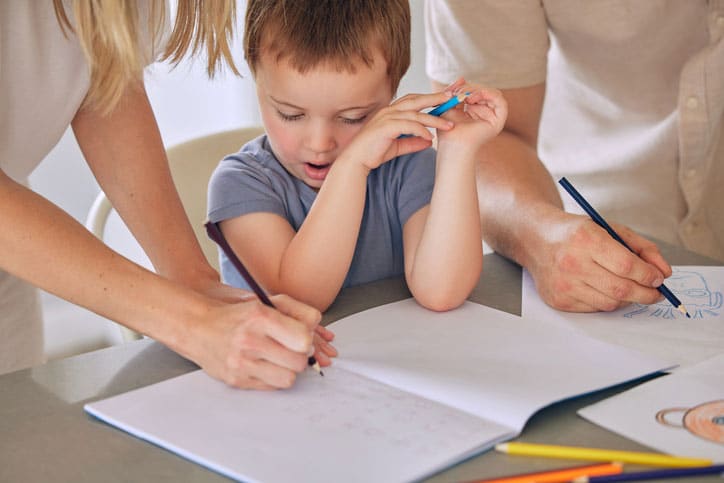Not sure if your child has autism spectrum disorder? Think you may have autism as an adult, but you’ve never officially been diagnosed? A professional evaluation will answer all of your questions and jumpstart your journey toward autism treatment and management. Check out this guide to learn how autism is diagnosed.
Average Age for Autism Diagnosis
Early indicators of autism may be apparent in infancy, but the average age for an autism diagnosis is between 3 and 7 years old. This is around the time when children develop language skills, and it’s apparent when behaviors may not align with age-appropriate traits. For instance, your child may not look you in the eye when you speak, or they may not say full sentences when they’re “supposed to.” These are symptoms that may prompt you to pursue an autism screening.
Here are some signs of autism to watch out for:
- Avoiding direct eye contact
- Not responding to their name
- Delayed speak and language development
- Strong aversions to certain smells, sights or tasks
- Repetitive movements or pacing
- Repeating phrases or replaying specific scenes from something they’ve watched
- Difficulty understanding body language and social cues
- Strong attachment to routines
- Trouble expressing emotions
Note that in the case of “high functioning autism” or the condition formerly known as Asperger’s syndrome, the symptoms of autism may take longer to notice. People with autism learn how to mask their symptoms to adapt to their environment. If the symptoms are mild to moderate, masking may make the them even less noticeable. This is why some children do not get diagnosed until they reach adulthood, but there are still treatment options available regardless of age.
Autism Testing at a Glance
Autism screening is not a one-size-fits-all process. It involves a combination of factors, all aimed at determining what a person’s strengths and struggles are. An autism screening usually consists of interviews with the child/adult and/or their parent or guardian. The exam may also include tasks to complete or certain activities aimed at gauging a person’s development and behaviors.
Because people get diagnosed at different ages and development varies from one person to the next, the autism testing process must be tailored for each person’s needs. In the end, the clinical psychologist or testing provider will take all the data gathered to determine if the person has autism or if there may be something else going on beneath the surface.
Can Autism Be Diagnosed before Birth?
In most cases, autism is diagnosed in the toddler or early school years after a child has noticeable disruptions in development. With that said, scientists are constantly working on new ways to diagnose autism and provide early intervention. A new study from Ben-Gurion University shows that a routine ultrasound in the second trimester could reveal early indicators of autism. This level of diagnostics is still years away from being put into practice, but it goes to show how much we still have yet to learn about autism spectrum disorder.
What to Do After an Autism Diagnosis – Treatment and Support
You or your child has officially been diagnosed with autism. Great! Now what?
Autism testing is one step in a much larger journey. You could pursue academic support, therapy, treatment, symptom management, executive functions coaching, and so much more. Here at CNLD Testing & Therapy, we walk you through every step of the process to ensure you or your child gets the support you need. We offer autism screening and autism treatment under one roof, as well as educational advocacy and coaching for adults with autism. Reach out to (734) 994-9466 to schedule an autism screening.


